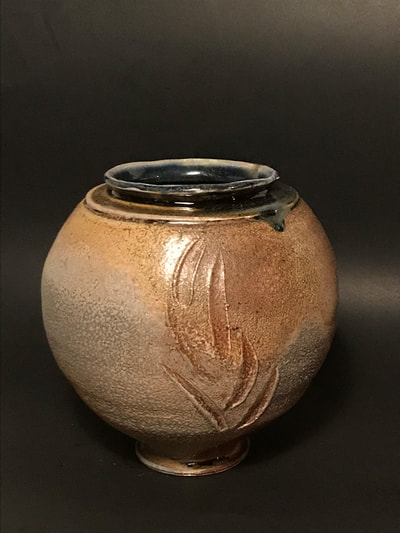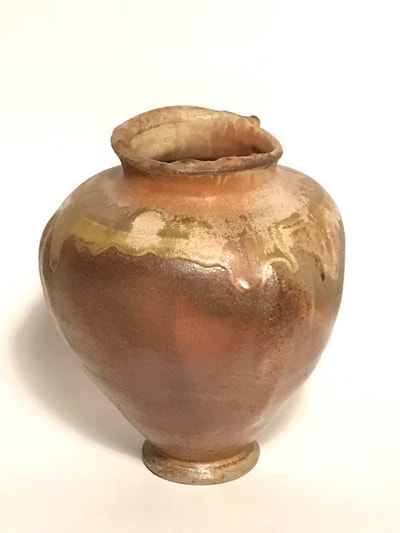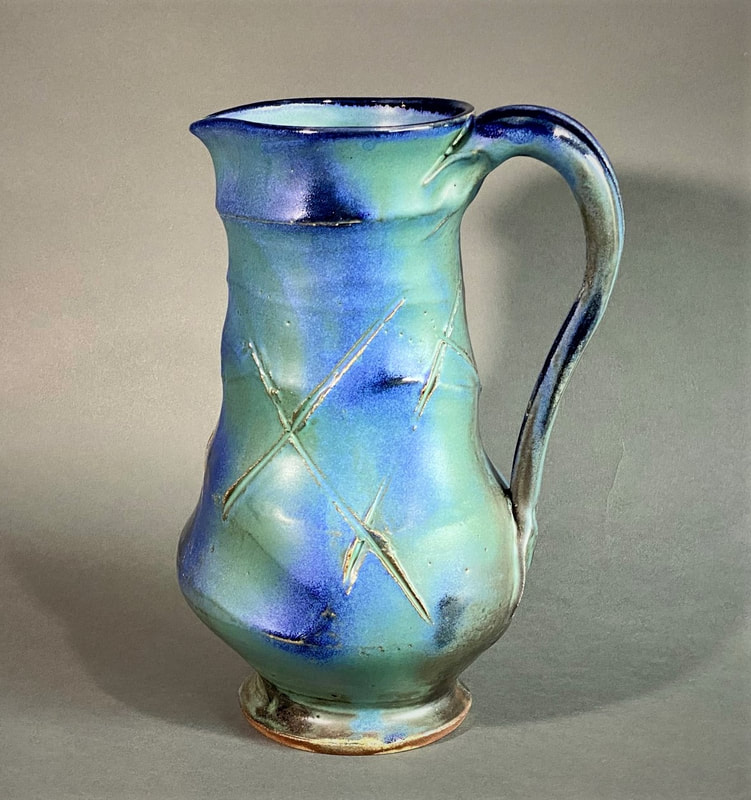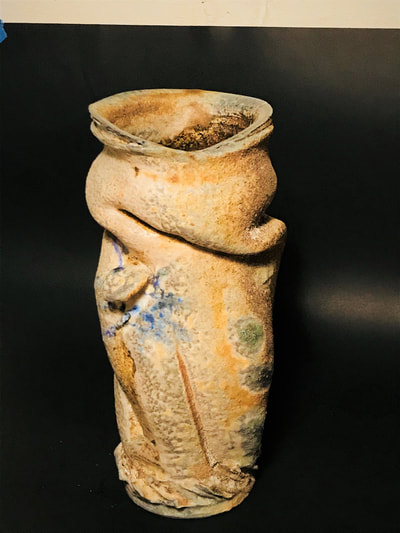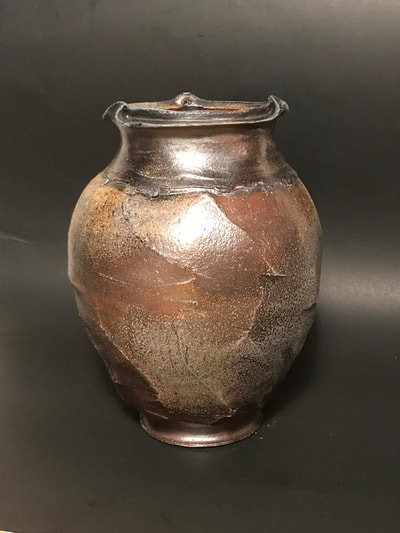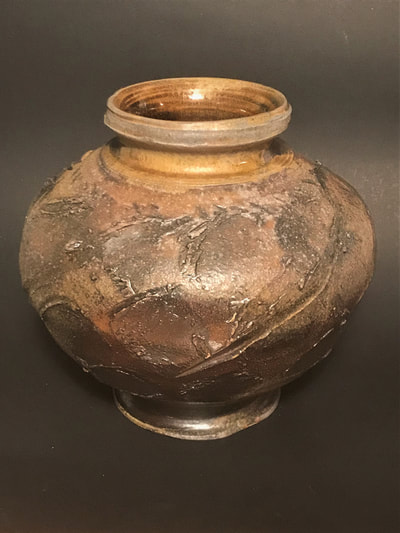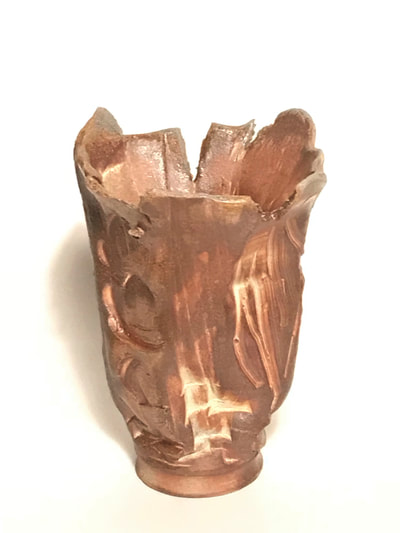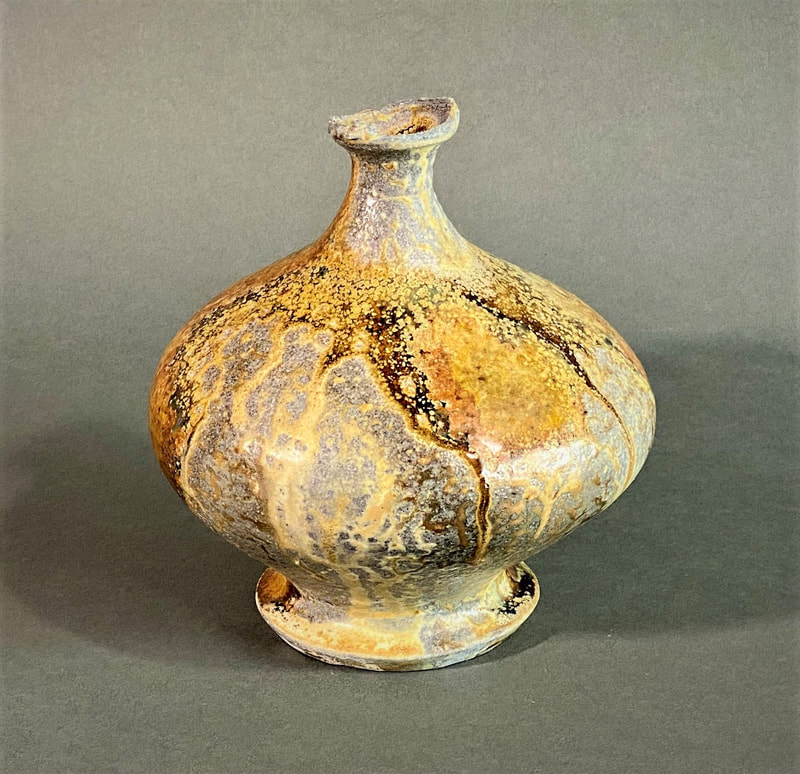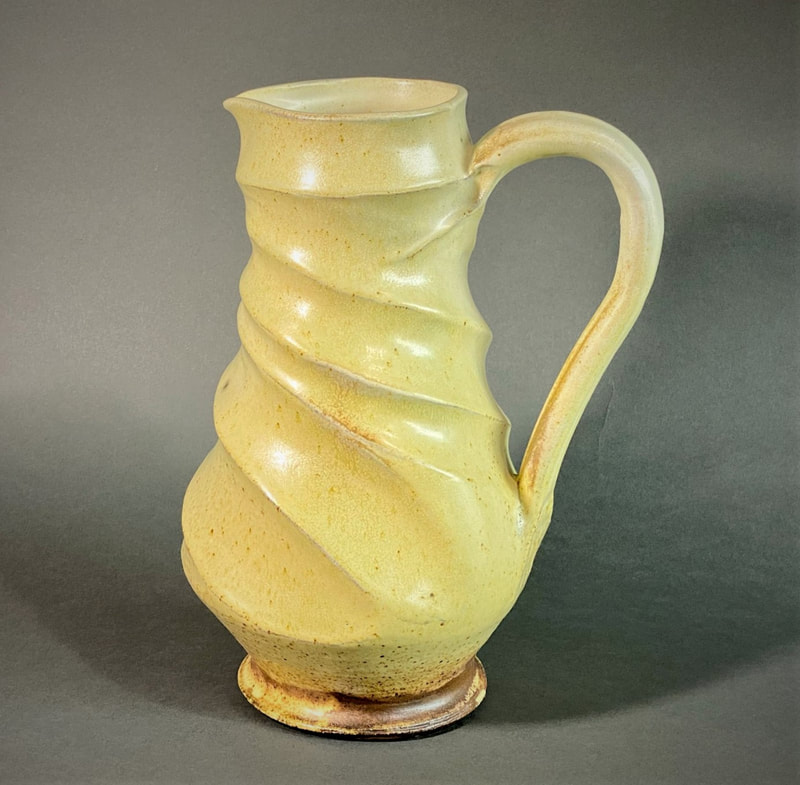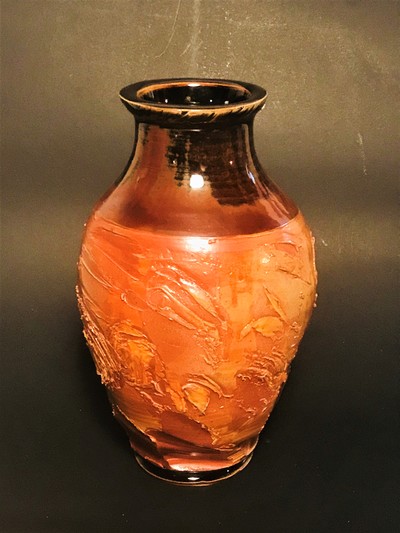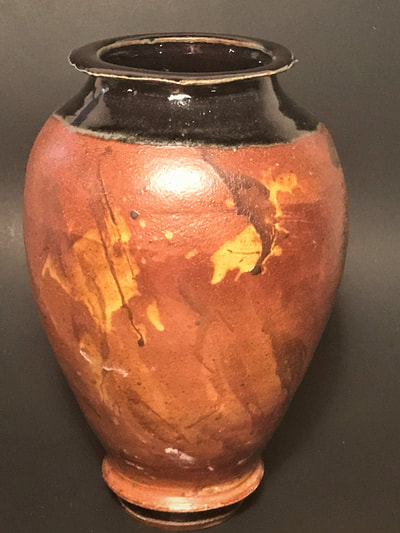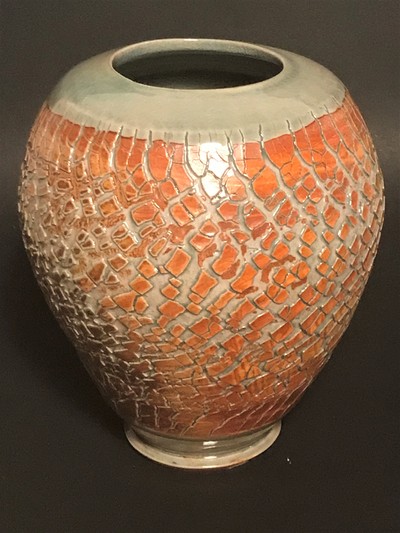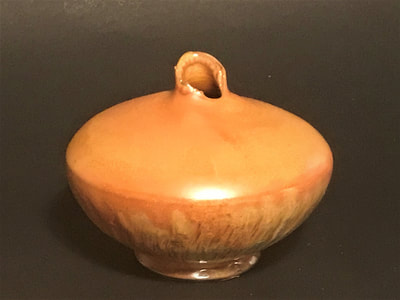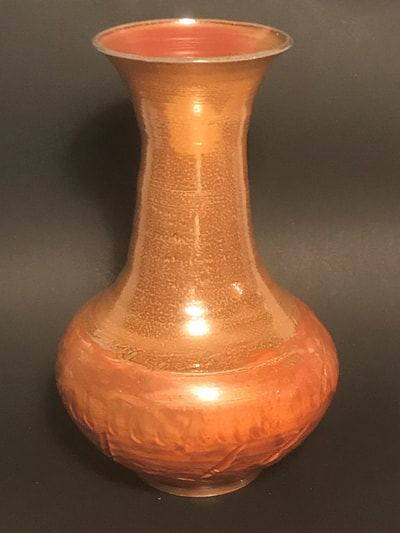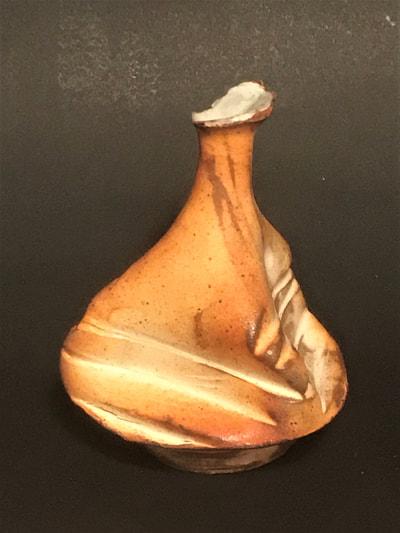Wood Fired Work
Wood kilns can reach temperatures of up to 2,500 °F, and produce fly ash and volatile salts. The complex interaction of ash, salts, minerals in the clay and the flame itself are what give wood fired pots their unique characteristics. Wood ash might lightly settle on a piece during the firing, or accumulate to the point where the ash drips down the sides of a pot, or the ash might even accumulate around the pot until it is completely submerged. Placement of pieces within the kiln also greatly affect each piece's final appearance.
NOTE: Click on the image for full view and slideshow.
NOTE: Click on the image for full view and slideshow.
Soda Fired Work
Soda firing is another type of atmospheric firing technique where sodium is introduced into the kiln environment at approximately 2,200 °F. Typical sources of sodium used are sodium bi-carbonate (baking soda) and soda ash (sodium-carbonate).The soda vaporizes and is carried on the flame throughout the kiln. The soda combines with the silica, alumina, iron, and other elements in the surface of the wares to produce a glazed or flashed surface.
NOTE: Click on the image for full view and slideshow.
NOTE: Click on the image for full view and slideshow.
